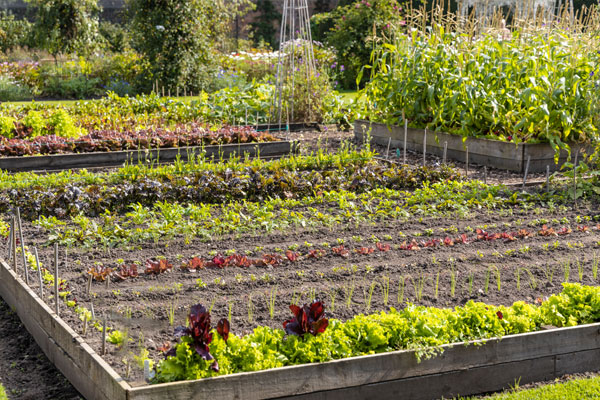Welcome to the world of wild foraging on a 15-acre homestead! Foraging is not just a means of gathering food; it’s a rewarding journey into the heart of nature. This article will guide you through the essentials of transforming part of your land into a thriving source of natural nourishment. Whether you’re new to homesteading or a seasoned pro, this guide is tailored for all homestead dreamers seeking sustainable living.

The Appeal of Wild Foraging
Foraging allows you to discover a variety of edible plants, mushrooms, and herbs that thrive naturally on your land. It’s an eco-friendly approach that not only reduces your carbon footprint but also connects you deeply with the environment. The excitement of finding a hidden patch of edible greens or a cluster of wild berries is unmatched.
Why Forage on a 15-Acre Homestead?
With a 15-acre homestead, you have the space to explore diverse ecosystems and microclimates. This space allows for the cultivation of different plant species native to your region, enhancing biodiversity and food security. Check out the ATV trails on your homestead as a way to access remote areas for foraging.
Planning Your Foraging Expedition
Before you begin, familiarize yourself with local flora and fauna. Understanding what grows naturally in your area will help you identify edible plants. Resources such as field guides or local workshops can be invaluable. Consider setting up a dedicated indoor workshop to study and prepare for your foraging adventures.
Tools for Successful Foraging
Equip yourself with a sturdy basket or bag, a good pair of gloves, and a field knife. Having the right tools can make your foraging trips more productive and enjoyable.
Identifying Edible Plants
The key to successful foraging is identifying safe and edible plants. Start by focusing on a few common ones, such as dandelions, wild garlic, and chickweed. These plants are often abundant and easy to recognize.
Mushroom Foraging
Mushroom foraging adds an exciting element to your foraging journey. However, it requires careful identification, as some mushrooms can be toxic. Consider joining a local mycology group or consulting experts to learn more.
Foraging in Different Seasons
Each season offers unique opportunities for foraging. Spring brings fresh greens and herbs, while summer is perfect for berries and fruits. Fall is ideal for mushrooms and nuts. Embrace the changing seasons to enjoy a variety of foraged foods year-round.
Winter Foraging Tips
Even in winter, you can find edible plants like pine needles and wild onions. Learning to forage in winter broadens your skills and ensures you make the most of your land throughout the year.
Sustainable Foraging Practices
Practicing sustainable foraging ensures that your land remains bountiful for years to come. Harvest only what you need, and leave enough behind to allow plants to regenerate. Rotating your foraging areas can also help preserve the ecosystem.
Building a Wild Foraging Community
Engage with local foragers and homesteaders to share knowledge and experiences. Community support can be invaluable in expanding your skills and understanding of local ecosystems.
Preserving Your Foraged Finds
Once you’ve gathered your bounty, explore methods to preserve it. Drying, fermenting, and freezing are excellent ways to extend the shelf life of your foraged foods. Consider freezer planning to ensure you have ample space for storing your finds.
Cooking with Foraged Foods
Experiment with new recipes that incorporate your foraged ingredients. From simple salads to complex dishes, the possibilities are endless when you combine fresh, wild ingredients with creativity in the kitchen.
Legal Considerations in Foraging
Before foraging, familiarize yourself with local laws and regulations. Some areas may have restrictions to protect endangered species or private property. Respect these guidelines to avoid legal issues.
Documentation and Record Keeping
Keep a journal of your foraging experiences. Documenting what you find, when, and where can help you track seasonal patterns and improve your foraging strategies over time.
Conclusion
Wild foraging on a 15-acre homestead offers a sustainable and fulfilling way to connect with nature and enrich your lifestyle. By practicing mindful and informed foraging, you can enjoy a diverse array of natural foods while preserving the environment for future generations. Start your foraging journey today and embrace the abundance waiting in your own backyard.

FAQs
What is the best season for wild foraging?
Each season offers unique foraging opportunities. Spring is great for fresh greens, summer for berries, fall for mushrooms, and even winter has its select edibles.
How can I ensure I’m foraging sustainably?
Harvest only what you need and leave enough for the ecosystem to regenerate. Rotate foraging areas and avoid overharvesting.
Can I forage on any land?
No, always ensure you have permission to forage on land that is not your own. Public lands may have specific regulations, so check local laws before you forage.
For more information on designing a homestead, visit this guide.




